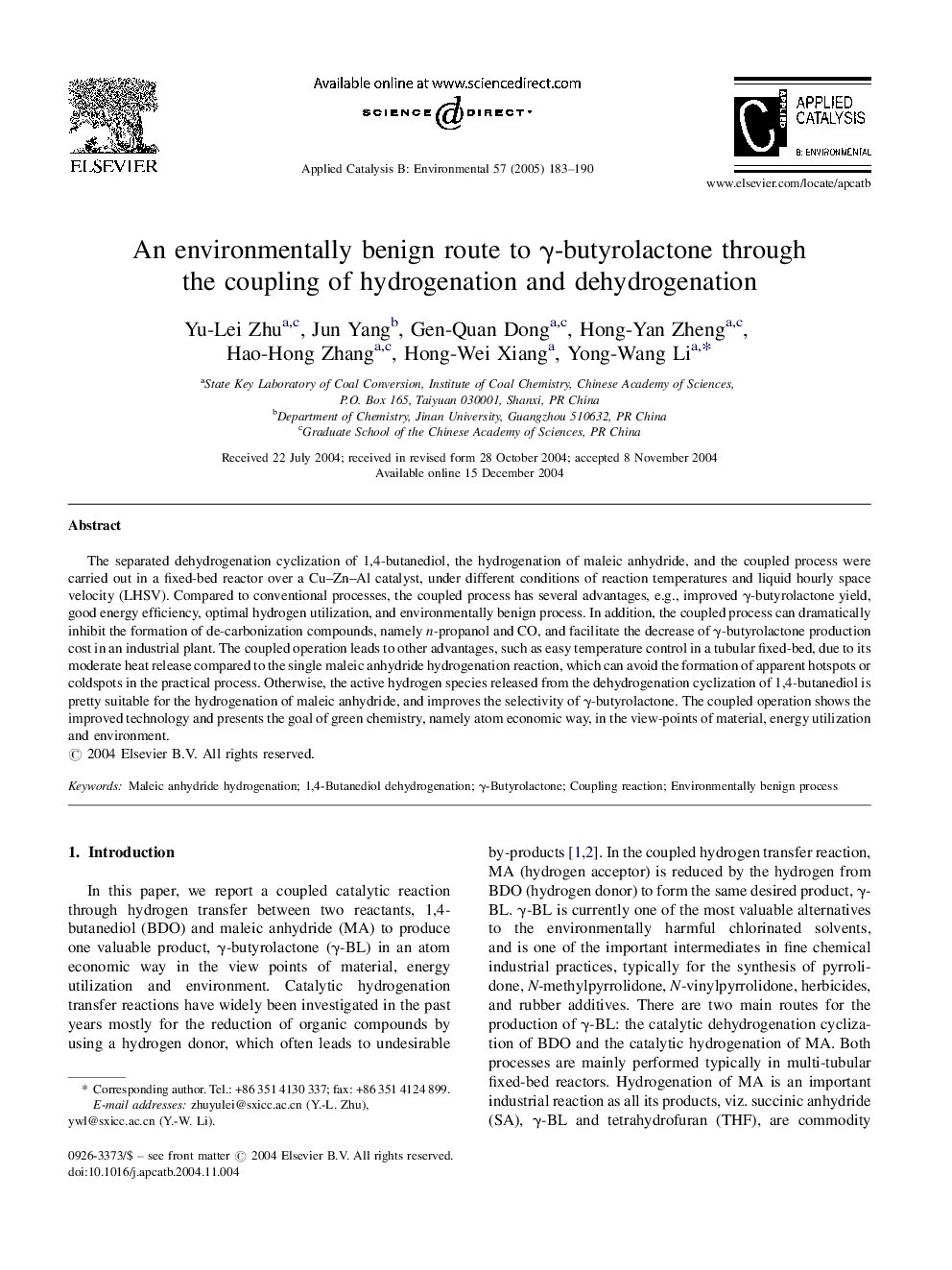| Article ID | Journal | Published Year | Pages | File Type |
|---|---|---|---|---|
| 10241557 | Applied Catalysis B: Environmental | 2005 | 8 Pages |
Abstract
The separated dehydrogenation cyclization of 1,4-butanediol, the hydrogenation of maleic anhydride, and the coupled process were carried out in a fixed-bed reactor over a Cu-Zn-Al catalyst, under different conditions of reaction temperatures and liquid hourly space velocity (LHSV). Compared to conventional processes, the coupled process has several advantages, e.g., improved γ-butyrolactone yield, good energy efficiency, optimal hydrogen utilization, and environmentally benign process. In addition, the coupled process can dramatically inhibit the formation of de-carbonization compounds, namely n-propanol and CO, and facilitate the decrease of γ-butyrolactone production cost in an industrial plant. The coupled operation leads to other advantages, such as easy temperature control in a tubular fixed-bed, due to its moderate heat release compared to the single maleic anhydride hydrogenation reaction, which can avoid the formation of apparent hotspots or coldspots in the practical process. Otherwise, the active hydrogen species released from the dehydrogenation cyclization of 1,4-butanediol is pretty suitable for the hydrogenation of maleic anhydride, and improves the selectivity of γ-butyrolactone. The coupled operation shows the improved technology and presents the goal of green chemistry, namely atom economic way, in the view-points of material, energy utilization and environment.
Keywords
Related Topics
Physical Sciences and Engineering
Chemical Engineering
Catalysis
Authors
Yu-Lei Zhu, Jun Yang, Gen-Quan Dong, Hong-Yan Zheng, Hao-Hong Zhang, Hong-Wei Xiang, Yong-Wang Li,
